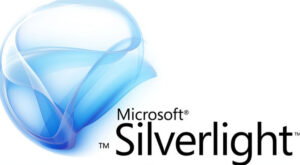
Adobe Flash and Microsoft Silverlight are two dominant technologies competing for a share of the web multimedia and rich internet application (RIA) market. They both offered tools and frameworks for developers to create interactive, multimedia content for web applications. In this article, we will compare Adobe Flash and Microsoft Silverlight and examining their features, adoption, strengths, and weaknesses during this pivotal period in web technology.
Adobe Flash:
- Features and Capabilities:
- Rich Multimedia: Adobe Flash continued to excel in creating rich multimedia experiences. It widely used for animations, interactive games, and video streaming.
- Broad Adoption: Flash enjoyed widespread adoption, with a vast number of web applications and websites relying on it for multimedia content.
- Development Tools: Adobe Flash Professional is the primary tool for creating Flash content, offering a range of features for animation and interactivity.
- Strengths:
- Cross-Platform Compatibility: Flash content ran on multiple platforms and browsers, making it a universal choice for developers.
- Extensive Ecosystem: It had a robust ecosystem of third-party libraries, frameworks, and developer communities, providing a wealth of resources for content creators.
- Video Streaming: Flash maintained its stronghold in video streaming, serving as the backbone for platforms like YouTube.
- Weaknesses:
- Security Concerns: Flash is plagued by security vulnerabilities that led to frequent updates and patches, causing concerns for users and administrators.
- Resource Intensive: Flash content could be resource-intensive, impacting performance, especially on mobile devices.
- Closed Technology: It is a proprietary, closed technology, limiting its adaptability and openness.
Microsoft Silverlight:
- Features and Capabilities:
- Rich Interactive Content: Microsoft Silverlight is positioned as a competitor to Flash, offering a framework for creating interactive and multimedia content for web applications.
- Integration with .NET: It is closely tied to the .NET framework, enabling developers to leverage their .NET skills for web development.
- Media Streaming: Silverlight excelled in media streaming, offering features like adaptive streaming for high-quality video playback.
- Strengths:
- Cross-Platform Compatibility: Microsoft aimed to provide cross-platform compatibility, but Silverlight remained more closely associated with Windows environments.
- XAML for UI: Silverlight used XAML (Extensible Application Markup Language) for defining user interfaces, which made it easier to design sophisticated UIs.
- Hardware Acceleration: Silverlight leveraged hardware acceleration for graphics and video playback, enhancing the user experience.
- Weaknesses:
- Limited Adoption: Silverlight struggled to gain widespread adoption, especially outside the Microsoft ecosystem. It remained a niche technology.
- Browser Support: It had stronger ties to Internet Explorer, limiting its cross-browser capabilities.
- Mobile Incompatibility: As mobile devices gained prominence, Silverlight’s incompatibility with these platforms posed a significant drawback.
Conclusion:
Adobe Flash and Microsoft Silverlight are still vying for the spotlight in the world of web multimedia and rich internet applications. Flash retained its dominance in multimedia content and video streaming, enjoying broader adoption and a robust ecosystem. Silverlight, closely tied to Microsoft’s .NET framework, offered a strong platform for interactive web applications but faced challenges in achieving widespread adoption and cross-platform compatibility.
Both technologies faced mounting challenges. Nevertheless, they remain important in web development, serving as transitional technologies in the evolving landscape of web multimedia and interactivity.



